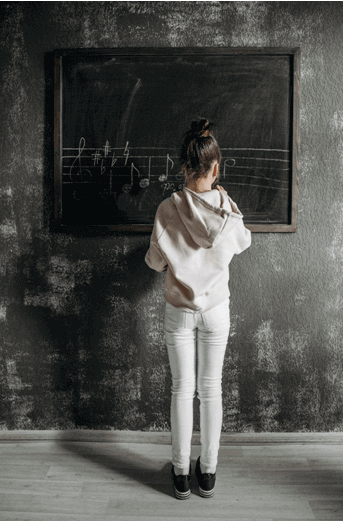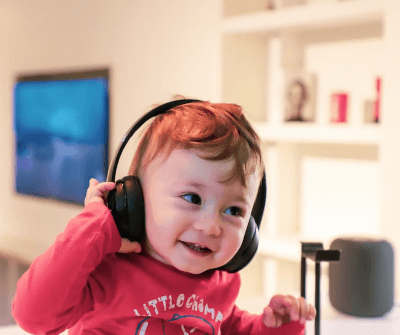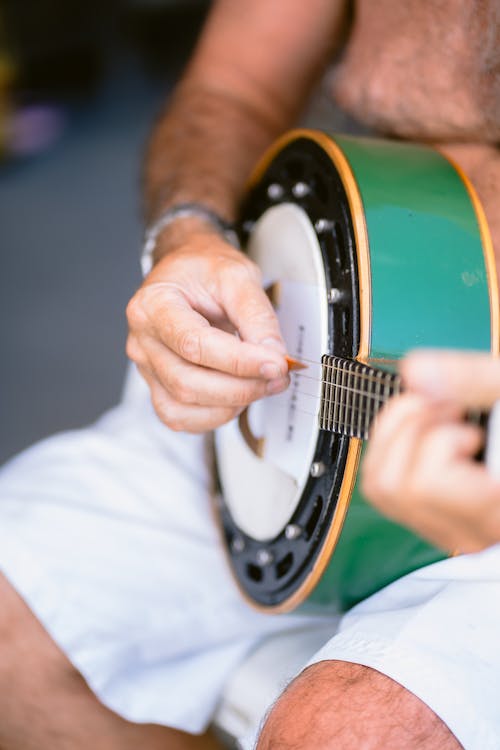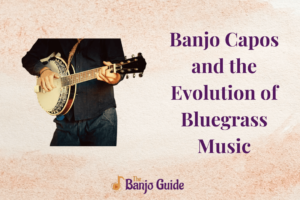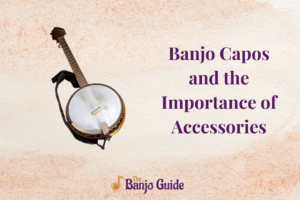Music is a great hobby, especially if you start at a young age. Learning music or how to play a musical instrument is said to significantly impact young children’s brain development.
Most of the population these days indulge in learning musical instruments like banjo and guitar from a very young age. This justifies the popularity of kid-friendly or beginner-friendly banjo kits available now.
The article below explores the significance and benefits of using DIY banjo kits for kids and analyses how banjo kits help develop musical skills and cognitive development at a young age.
How Can Banjo Kits Help Kids Develop Musical Skills at an Early Age?
Assembling and handling easy-to-learn banjo kits for kids has proven to be helpful for kids to develop musical skills at an early age. The following section explains how.
Improved Sensory Abilities
It takes an improved sensory ability to play musical instruments better. Activities like banjo kit assembling help kids have an elevated sensory experience. This enables them to feel a personal connection with the device they have created on their own and makes them feel much more comfortable with it. This allows them to play the instrument with much more confidence.
Discipline and Focus
Discipline and focus are crucial for excelling in a musical instrument like a banjo. When kids assemble a banjo kit, they are expected to discipline themselves and focus on the instructions. This acts as a mindful exercise for the children and evokes in their focus and discipline, two crucial aspects of playing a musical instrument.
Deeper Understanding
While engaging in a DIY banjo project, children better understand the components of a banjo better. This gives them an inside look at how exactly a banjo produces music. This understanding helps them in playing the instrument properly and even better.
Physical Coordination
Playing an instrument, especially a string instrument like a banjo, is all about physical coordination. Usually, children take a good chunk of time to develop physical coordination. But engaging in sensory activities like banjo assembling enables them to put their motor skills to good use and develop physical coordination better.
The Benefits of Learning to Play Banjo for Children’s Cognitive and Emotional Development
Researches show that playing musical instruments like the banjo provides great developmental benefits among children. The following section studies the benefits of learning to play banjo for children’s cognitive and emotional development.
- Learning banjo at an early age helps improve memory.
- Enhance cognitive skills like language processing and spatial reasoning.
- Improves social skills and confidence.
- Reduces stage fright.
- Improves children’s emotional intelligence.
- Develops problem-solving mindset and presence of mind.
- Boosts creativity.
- Enable the children to develop healthy peer relations through shared musical interests.
- Promotes bilateral coordination.
- Builds self-esteem in children.
- Promotes coordination and balance.
- Enable faster language development.
A Comprehensive Guide to Choosing the Best Banjo Kit for Kids
Choosing the most suitable banjo for your kid is crucial. The following section details the basic features you should look for while purchasing children-friendly banjo kits for your kids.
Age-Appropriate
Although there are many beginner-friendly banjo kits available, it is essential to choose the most age-appropriate one for your kid. Age appropriateness means the size, design, pattern, ease of playing, etc., according to your kid’s age and physical parameters.
Some beginner banjo kits for children can have adult-sized banjos. So, always look for banjo kits that are specifically labeled as kid-friendly.
Size
The banjo size should be the key concern when buying a banjo kit for your child. Because the size determines the comfort of the instrument for the child, so, make sure not to buy pretty big banjos, as children might find it challenging to reach out for the strings on such instruments.
Material Quality
Quality of the building material is essential when buying a beginner banjo kit for children. Children are vulnerable to diseases and allergies, so the building material must be high quality. Building materials processed or treated with harmful chemicals must be avoided from banjo kits for kids.
Durability
Chances are high for children to use the banjo roughly. Being kids, they might accidentally cause more wear and tear on instruments than a regular adult would do. So, kid banjos have to be highly durable and robust. They should be constructed well enough to resist hard blows or shocks.
Extra Set of Accessories
It is ideal for a kid banjo kit to have extra accessories like strings. Because as mentioned before, children may not be the best at preserving their musical instrument and maintaining it well. So, chances are there for parts of the banjo, like strings, to break when the children experiment with the device. So, an extra set of strings and similar parts can always come in handy.
Appealing Designs
All kids, irrespective of their gender or physical attributes, love color, and interesting patterns. Colors and patterns grab the attention of a kid quicker. Kid banjo kits should have exciting designs and colors that appeal to the children and motivate them to keep playing the instrument.
Tips and Tricks for Assembling and Maintaining a Banjo Kit for Your Child
The section below provides tips and tricks for assembling and maintaining a banjo kit for your child.
Assembling
- Make sure that all parts of the banjo are provided in the kit. You can crosscheck the available parts with the instruction manual. If any parts are missing, you can have many practical difficulties assembling the product.
- Choosing a color scheme beforehand helps much during the assembling process. This gives a direction to the assembling process.
- Make sure to prime the banjo body before staining or painting the banjo. Priming the body lets the banjo hold on to the paint much better. So the color will not crack or chip away even after exposure to wear and tear.
- Giving multiple color coats improves the product’s aesthetic quality and general appeal.
Maintaining
- Children mainly engage in playing and other physical activities, so it is best to clean their hands every time before playing the banjo. The natural oils and dirt on kids’ fingers can cause permanent damage to the banjo.
- Cleaning the banjo strings once the children finish playing the instrument is also advisable. You can always use paper towels for this cleaning purpose.
- The fretboard often gets dirty after playing it for a long time. So, make sure to clean the fretboard after the kids are done playing with the instrument.
- Maintaining a string-changing schedule is ideal for letting the banjo last longer. As children can play the strings roughly, a replacement must happen now and then. Maintaining a proper schedule for this purpose is ideal.
- You can also take your banjo to an expert or technician for occasional maintenance. Having DIY maintenance sessions can only have a minimum impact on the instrument. Providing professional help can only help improve the instrument’s performance in the long run.
- Try to deep clean the banjo now and then. Even if you clean the strings and the fretboard regularly, parts of the banjo can accumulate dust and dirt. So, deep clean the banjo at least twice a month.
Fun and Engaging Activities to Help Kids Learn Banjo and Stay Motivated
You can use the following methods to help kids learn banjo and stay motivated.
- Assign Rewards: You can assign rewards for your kids when they consistently engage in learning and playing the banjo.
- Game-Based Learning: You can devise interesting games incorporating banjos to motivate the children to learn and play them.
- Friendly Competitions: Conducting friendly banjo competitions within the child’s peer group can motivate the child to learn and play the banjo well.
- Using Personally Relevant Content: You can pick your child’s favorite songs and put them into their banjo lessons. This will surely appeal to them and motivates them to learn banjo more.
Summary
The recent popularity gained by banjo has enabled the creation of DIY banjo kits for kids. Using kid banjo kits enables children to develop many cognitive and emotional benefits. It also helps with many social skills.
Choosing a suitable banjo kit for children that is age-appropriate, size-appropriate, safe, and devoid of harmful chemicals is essential. Using several tips, techniques, and fun activities, you can keep your child engaged in banjos and help them stay motivated.
FAQs
1. What is the best way to learn banjo?
There are many practical ways to learn banjo for a kid. You can use your local teachers as this provides you with close attention from an expert. You can also use online resources through various online platforms. Many video tutorials are available on YouTube and live online classes are on Google.
You can also use self-help books to learn banjo on your own. Although it could be a bit confusing at times, many have vowed for its usefulness.
2. Which is harder for a kid- banjo or guitar?
Banjo and guitar are two stringed instruments, but they are essentially different. From a kid’s point of view, a banjo would be relatively easier to play as there are a smaller number of strings in them. But some banjo models can be a bit too heavy than guitars, so it is essential to consider the banjo’s size before buying it for a kid.

